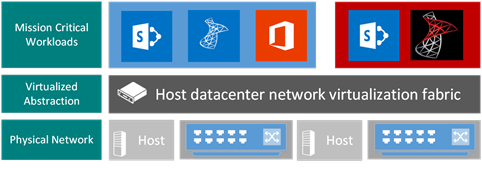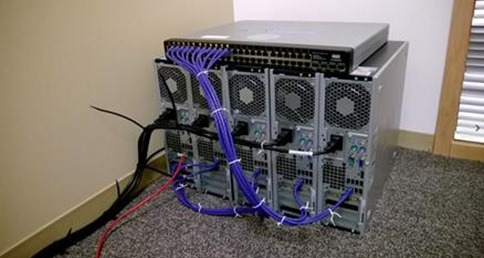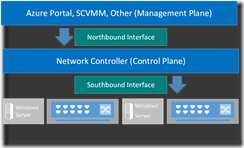Tip of the Day: Understanding Network Virtualization - Part 2
Today’s (Networking) Tip…
Understanding Network Virtualization - Part 2
Yesterday's provided a very high level explanation Network Virtualization. Before going deeper, let's sneak in a little surrounding context and define a few new terms.
Why Bother?
Don’t mean to get all marketing-speak on you, but often it is easier to understand the what's of something if you first understand the why's.
Amongst other benefits, Software Defined Network Virtualization brings new agility, flexibility, and mobility to the datacenter.
Put a little more practically; it allows you to deploy, scale, manage, and even migrate mission critical workloads independent of underlying physical resources. At the same time, it enables the ability to expand the capacity of the physical underlay (storage, network throughput, and compute) with little or no impact to running workloads.
Fig 1. Workload, including traffic flow control, is abstracted from the physical fabric
What are the Barriers to Entry?
Lower than you might think! A fork lift upgrade of the existing network is not a prerequisite. Quite the opposite in fact. The use of open standards (more in a later tip) gives customers the ability to maximize their existing hardware investments in the physical underlay.
What the Heck is an Underlay!!?
It is easy to get bogged down by the jargon that gets bandied about when discussing Software Defined Network Virtualization. The first you are likely to encounter typically are those that simply refer to the various components and behaviors typically encountered in the datacenter network.
Network Overlay
Provides abstraction of management and traffic flow control from the underlying physical devices. Characteristics include management interfaces allowing…
creation of network policy (that is to say, configurations that determine how and to whom physical resources are allocated, thereby shaping traffic flow),
network control (assignment and enforcement of those policies), and
device configuration (bit of an overlap at least in terms of being a function of the network controller but, essentially the delivery of configurations to the devices themselves)
Network Underlay
Components that make up the physical infrastructure; servers, switches, routers, network appliances such as load balancers, firewall, intrusion detection systems, gateways, etc…
Fig 2. Network Overlay and Underlay
Some implementations separate network management and network controller functions. Network virtualization in 2012 R2 however, leverages System Center Virtual Machine Manager to fill both roles.
Orchestration
Device and other configurations required to virtualize the network, thus providing control over traffic flow, are completed in the network overlay delivered via open standards to physical devices in the network underlay.
While here, we should also discuss the terms northbound and southbound which have specific relevance related to network controller functionality.
Fig.3 A Network Controller receives configuration policy from Northbound management software
and delivers it Southbound to network devices and appliances.
Note: in 2012 R2 both management and control functions are handled in SCVMM.
Northbound Interface
Refers to the programmatic path by which the Network Controller receives policy configuration information from management software.
Southbound Interface



